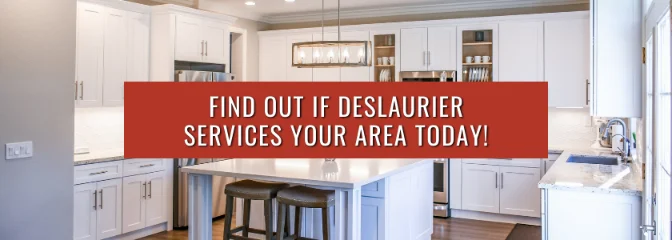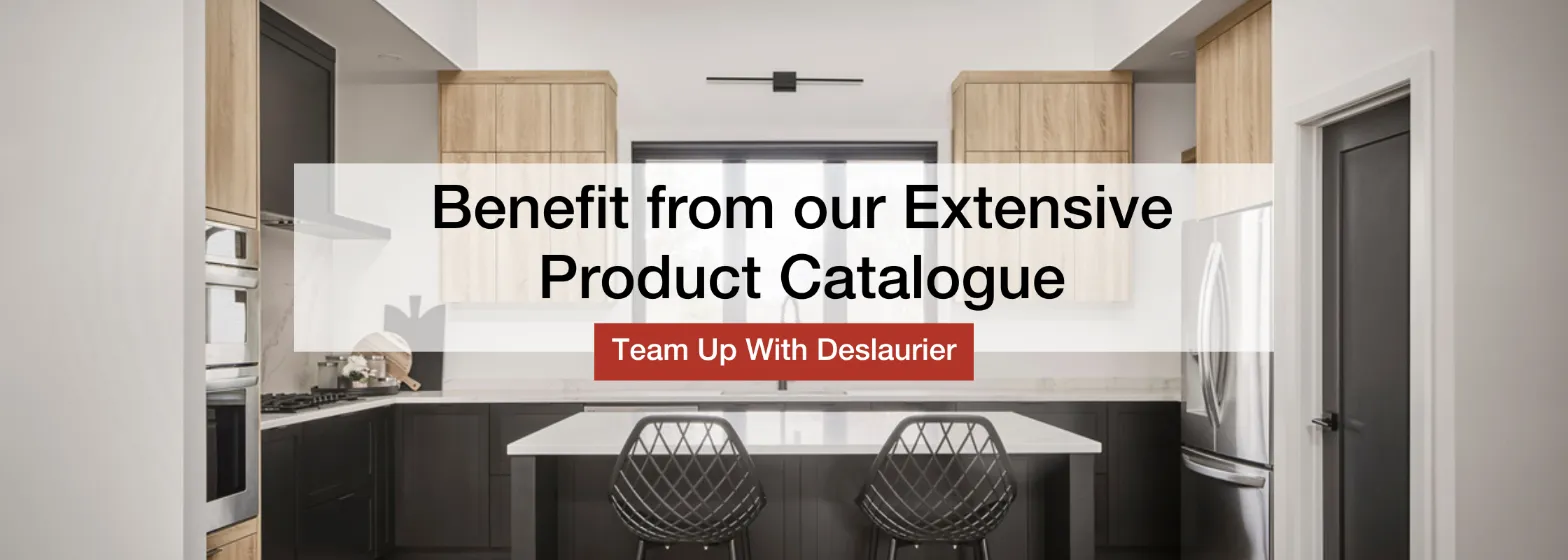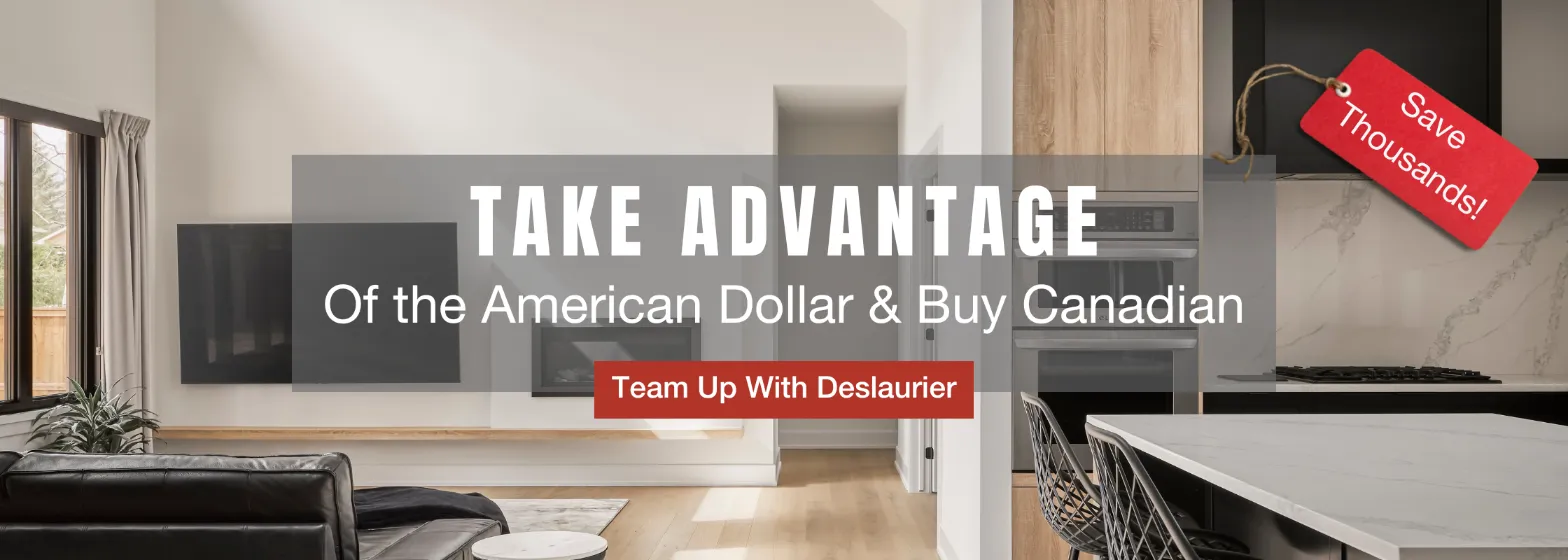21/09/2021 • Blog, Product Reviews, Comparisons
Birch vs. Maple Kitchen Cabinets
Not sure if you should go with birch or maple for your kitchen cabinets?
Both are popular solid wood choices, so how do you decide which is better?
This article will take you through all the characteristics of birch and maple as a cabinet material one by one. We’ll compare the two options side by side and weigh their pros and cons.
No biases, just facts—let’s find out which material will suit your kitchen reno best.
Read on!
A Note on Birch and Maple Cabinets
It’s worth noting that not all maples and birches are alike. Technically speaking, there are several different varieties of both maple and birch, and each one is slightly different from the next.
There are two distinct types of maple: hard and soft maple. The differences between these two categories are major, so it’s crucial we clarify which we’re talking about.
For the purposes of this article, we’ll be comparing hard maple to birch.
For this comparison of cabinet materials, soft maples are irrelevant because almost all cabinet makers (including Deslaurier) use hard maple for cabinet doors.
With that established, let’s move on to the appearance of birch vs. maple.
Birch vs. Maple Cabinets: Appearance
Looking at birch and maple side-by-side with an untrained eye, you may not be able to tell these two wood species apart:
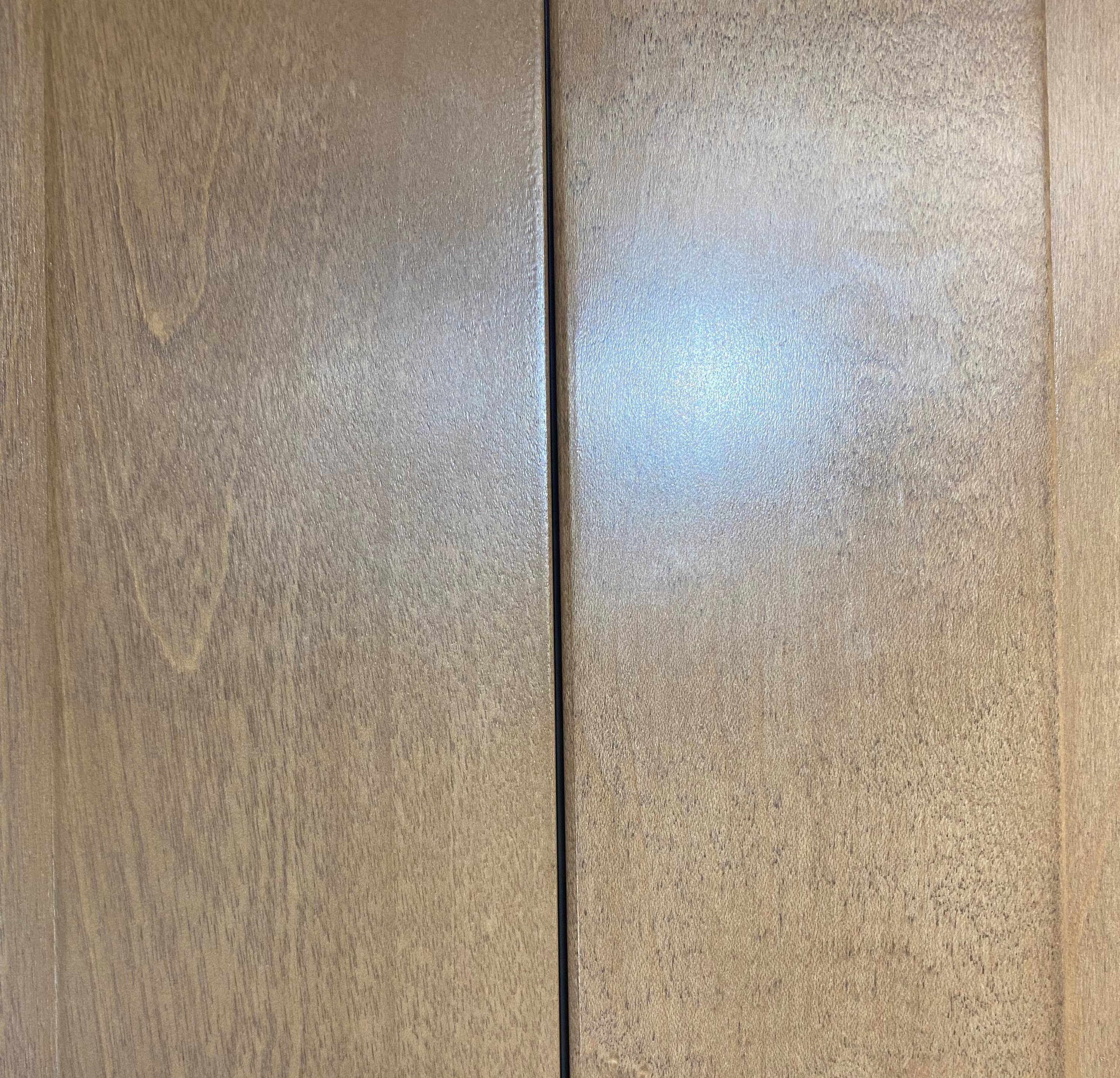
Above, birch is on the left and maple is on the right. As you can see, both birch and maple are domestic hardwoods with a very subtle grain and a similar pale colouring. They look very similar!
To the trained eye, though, maple is slightly redder in colour whereas birch looks more yellow-ish.
Birch has a simple grain typically made up of straight (ish) lines. Maple’s grain is also simple and subtle, but more likely to be wavier and curlier than birch.
Remember, hardwood products are natural products—just like the trees themselves, no two cabinet doors are exactly alike. There will always be differences from one slab to the next, and that’s part of their beauty!
Another aesthetic difference is that maple tends to have a very smooth and shiny surface. In comparison, birch has a rougher, coarser texture.
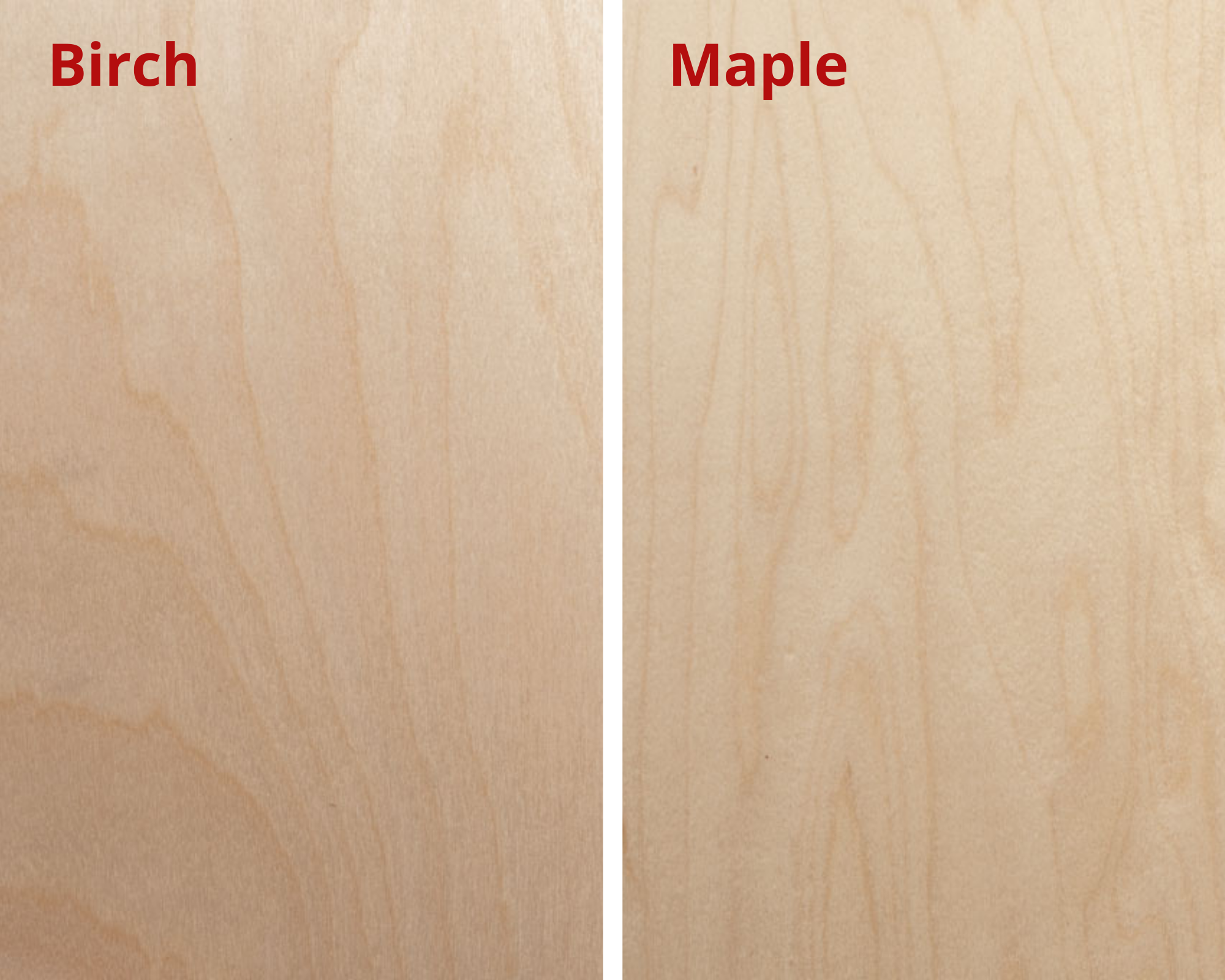
Birch vs. Maple Cabinets: Strength
Of the two, maple is a stronger and denser wood product than birch.
That’s not to say that birch isn’t strong. Birch has a high tensile strength that can handily accommodate all the nails and screws required to make functional, modern kitchen cabinets. There’s no doubt that birch makes for a solid and reliable cabinet.
To give you some numbers, on the Janka scale of hardness, hard maple ranges from 1400-1500 and birch lands around 1200-1300.
Now, if you’re careful around your cabinets, this difference in strength may be negligible to you as a user.
But, if you were to put birch and maple to the test to see which one would resists denting and scratching, maple would come out on top.
When it comes to cabinetry in a high-traffic, busy household, that difference in strength may translate to some extra years on the lifespan of your kitchen.
Birch vs. Maple Cabinets: Finishing Options
The way birch and maple take to different finishes, like paints and stains (see our article comparing stained vs. painted cabinets), is often a big consideration in a homeowner’s decision.
Stains
Stains are a great choice for both maple and birch cabinets to highlight the beautiful, natural character of each wood species’ grain.
As we mentioned earlier, birch has a rougher texture than maple, which translates into a more matte stained finish. On the other hand, stained maple appears glossy because of its smooth texture.
Depending on your aesthetic preferences, you may prefer the shine of maple or the flatness of birch. Of course, you can always counteract the natural surface of the wood by using a high-gloss or matte top coat.
For all the DIYers out there, it’s worth noting that birch is a porous wood species. When it comes to using a dark stain on birch, it’s possible that the cabinet doors absorb the stain at varying speeds and cause a “blotchiness” effect if not performed by a professional.
If you’re DIY-staining your birch cabinets, you should be prepared for the possibility of an uneven result.
Paints
Both birch and maple are considered paint-grade hardwoods thanks to their low-key grain and uniform surface.
If you want to paint your cabinets, you should know that all painted finishes require a high level of maintenance to prevent dings and dents. There’s no underlying wood species that can 100% protect your painted finish from damage.
Also, since both birch and maple are solid woods (and therefore, living, breathing products), both of these wood species will expand and contract with humidity changes.
Over time, that slow expansion and contraction will cause stress cracks in the paint wherever there are joints in the cabinet door.
Both birch and maple are equally susceptible to cracks, as shown below:
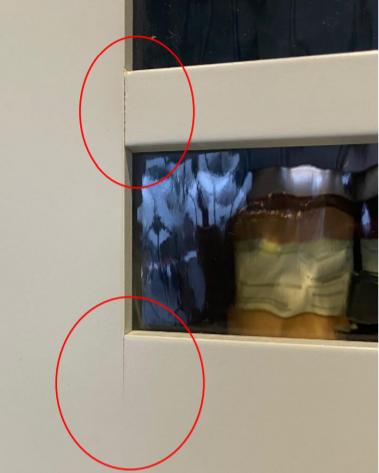
If you want to prevent cracks, choosing a non-hardwood material like MDF is your best bet.
Although the point of this article is to compare birch vs. maple, we thought MDF was worth mentioning because it’s an ideal product for painted finishes.
While not entirely impervious to cracking, MDF (medium density fibreboard) is a manmade product formed by combining resins with different hardwood and softwood fibres. As a result, MDF is a more stable wood product than birch or maple—meaning it’s less likely to crack.
Birch vs. Maple Cabinets: Cost
The cost of birch and maple is where these two wood species can stand out from each other.
Typically speaking, maple is usually more expensive than birch. Birchwood is, most of the time, a cabinet maker’s entry-level product.
However, cost is always dependent on the grade of the wood, market conditions, and manufacturer.
For example, at Deslaurier, we source very high grades of wood, and our birch and maple cabinets are equivalent as far as purchase price.
This may not be the case with another cabinet maker.
It’s also interesting to note that maple is typically less expensive than most other more exotic hardwoods. That’s because, like birch, maple is grown all over North America and is easy to source.
So, on one hand, maple is (often) more expensive than birch. On the other hand, maple is less expensive than alternative hardwoods of a higher strength, like cherry, that are harder to come by.
Maple vs. Birch Cabinets: Which is Better?
Although maple is often viewed as a superior, high-grade hardwood, we’ve seen that apart from its strength, maple is comparable to birch on most counts.
There’s no clear frontrunner between birch and maple: both are worthwhile options for kitchen cabinetry.
See a birch (left) and maple (right) cabinet door from Deslaurier's showroom in Ottawa:
.png?width=4032&name=MicrosoftTeams-image%20(7).png)
Which is better for YOU is another question.
If budget is a concern, birch might make your dollar go further. If you’re worried about excessive damage on a painted finish, maple will withstand the day-to-day brunt of kitchen use a little better.
Weigh your budget, your finish choice, and your lifestyle to choose the best cabinet wood species for your dream kitchen.
| Birch Cabinets | Maple Cabinets | |
| Pros |
|
|
| Cons |
|
|
Design With Deslaurier
Want to inspect the differences of birch and maple cabinets with your own two eyes? Book a free appointment with us in Jupiter, FL!
Deslaurier Custom Cabinets is a premier cabinet maker with sky-high standards for the cabinetry we produce. Our mission is to “craft quality & function for a beautiful life”, and our design team leverages 60+ years of know-how to do just that!
Fill out the form below to get started with us!
Interested in becoming an authorized dealer in Florida? Connect with us on our Become a Dealer page today!
Related Links:
- Thermofoil vs. Paint
- Stock vs. Custom vs. Semi-Custom Cabinets: What's the Difference?
- Worn and Distressed Kitchen Cabinets
